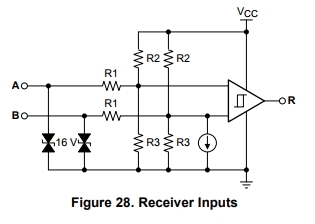Hi
I have some question regarding the external fail safe circuit.
Do we need the external fail-safe circuit for the differential input when it is in the communication stop and line open?
And how much the internal resistor(R1, R2 and R3) at the following block diagram?
Regards,
Koji Hamamoto


